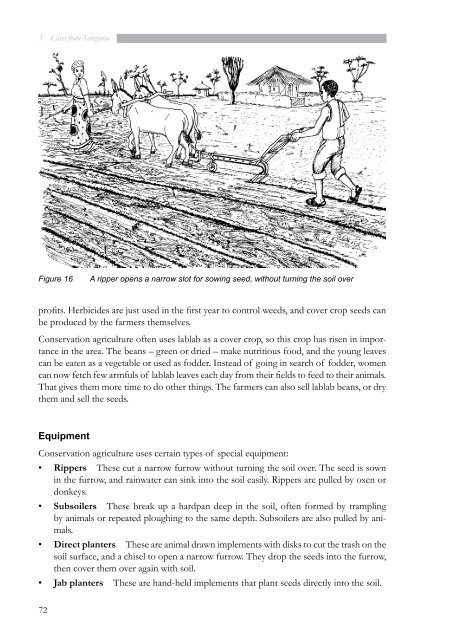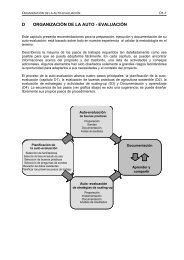cases from tanzania - Sustainet
cases from tanzania - Sustainet
cases from tanzania - Sustainet
You also want an ePaper? Increase the reach of your titles
YUMPU automatically turns print PDFs into web optimized ePapers that Google loves.
3 Cases <strong>from</strong> Tanzania<br />
Figure 16 A ripper opens a narrow slot for sowing seed, without turning the soil over<br />
profits. Herbicides are just used in the first year to control weeds, and cover crop seeds can<br />
be produced by the farmers themselves.<br />
Conservation agriculture often uses lablab as a cover crop, so this crop has risen in importance<br />
in the area. The beans – green or dried – make nutritious food, and the young leaves<br />
can be eaten as a vegetable or used as fodder. Instead of going in search of fodder, women<br />
can now fetch few armfuls of lablab leaves each day <strong>from</strong> their fields to feed to their animals.<br />
That gives them more time to do other things. The farmers can also sell lablab beans, or dry<br />
them and sell the seeds.<br />
equipment<br />
Conservation agriculture uses certain types of special equipment:<br />
• Rippers These cut a narrow furrow without turning the soil over. The seed is sown<br />
in the furrow, and rainwater can sink into the soil easily. Rippers are pulled by oxen or<br />
donkeys.<br />
• Subsoilers These break up a hardpan deep in the soil, often formed by trampling<br />
by animals or repeated ploughing to the same depth. Subsoilers are also pulled by animals.<br />
• Direct planters These are animal drawn implements with disks to cut the trash on the<br />
soil surface, and a chisel to open a narrow furrow. They drop the seeds into the furrow,<br />
then cover them over again with soil.<br />
• Jab planters These are hand-held implements that plant seeds directly into the soil.<br />
72




